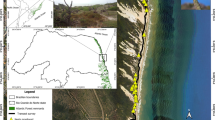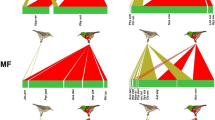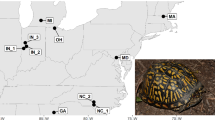Abstract
In small mammals, huddling appears as an efficient response to low temperature with important consequences in energy saving, which in turn affect individual fitness. It has been proposed that this behavior is a self-organized process. However, to prove self-organization, it is necessary to study the dynamics of huddling, ruling out the presence of leaders. The objectives of this study were to determine the dynamics of huddling at different temperatures in Octodon degus, documenting the presence or absence of leaders, and to study the consistency of this behavior in two contrasting seasons. We found that huddling dynamics did not indicate the presence of leader initiators of the clustering at lower temperatures. There was no deterministic pattern in huddling dynamics, in any period or at any temperature, suggesting a behavior triggered spontaneously without any order, hierarchy, or recipes. The effect of temperature on huddling behavior was marked and similar in both seasons. The variability of the huddled groups was greater at higher temperatures, which is explained by a greater movement of individuals and more frequent variations in the number and size of the groups at higher temperatures. The results describe huddling as a self-organized behavior, more economical than other physiological processes and therefore preserved by natural selection. This increases its importance for survival and fitness given the significant reduction in energy expenditure achieved under conditions of low temperatures and reduced availability of food, such as during the breeding season of O. degus.




Similar content being viewed by others
References
Adkins-Regan E (2005) Hormones and animal social behavior. Princeton University Press, USA
Alberts J (2007) Huddling by rat pups: ontogeny of individual and group behavior. Dev Psychobiol 49:22–32
Andrews R, Belknap R (1986) Bioenergetic benefits of huddling by deer mice (Peromyscus maniculatus). Comp Biochem Physiol 85A:775–778
Arnold W (1988) Social thermoregulation during hibernation. J Comp Physiol B 158:151–156
Arnold W (1990) The evolution of marmot sociality II: costs and benefits of joint hibernation. Behav Ecol Sociobiol 27:239–246
Bozinovic F, Lagos J, Vásquez R, Kenagy G (2000) Time and energy use under thermoregulatory constraints in a diurnal rodent. J Therm Biol 25:251–256
Bozinovic F, Rosenmann M, Veloso C (1988) Termorregulación conductual en Phyllotis darwini (Rodentia: Cricetidae): efecto de la temperatura ambiente, uso de nidos y agrupamiento social sobre el gasto de energía. Rev Chil Hist Nat 61:81–86
Bozinovic F, Vásquez R (1999) Patch use in a diurnal rodent: handling and searching under thermoregulatory costs. Funct Ecol 13:602–610
Brillon D, Zheng B, Campbell R, Matthews D (1995) Effect of cortisol on energy expenditure and amino acid metabolism in humans. Am J Physiol 268:501–513
Camazine M, Deneubourg J, Franks N, Sneyd J, Theraulaz G, Bonabeau E (2001) Self-organization in biological systems. Princeton University Press, New Jersey
Canals M, Bozinovic F (2011) Huddling behavior as critical phase transition triggered by low temperatures. Complexity 17:35–43
Canals M, Rosenmann M, Bozinovic F (1989) Energetics and geometry of huddling in small mammals. J Theor Biol 141:181–189
Canals M, Rosenmann M, Bozinovic F (1997) Geometrical aspects of the energetic effectiveness of huddling in small mammals. Acta Theriol 42:321–328
Canals M, Rosenmann M, Novoa F, Bozinovic F (1998) Modulating factors of the energetic effectiveness of huddling in small mammals. Acta Theriol 43:337–348
Colby L, Rush H, Mahoney M, Lee T (2012) Other rodents: degu. In: Suckow M, Stevens K, Wilson R (eds) The laboratory rabbit, guinea pig, hamster, and other rodents. Academic–Elsevier, San Diego, pp 1032–1054
Contreras LC (1984) Bioenergetics of huddling: test of a psychophysiological hypothesis. J Mammal 65:256–262
Couzin I, Krause J, Franks N, Levin S (2005) Effective leadership and decision-making in animal groups on the move. Nature 433:513–516
Ebensperger LA, Hurtado M, Ramos-Jiliberto R (2006) Vigilance and collective detection of predators in degus (Octodon degus). Ethology 112:879–887
Ebensperger LA, Hurtado M, Soto-Gamboa M, Lacey E, Chang A (2004) Communal nesting and kinship in degus (Octodon degus). Naturwisseschaften 91:391–395
Ebensperger LA, Wallem P (2002) Grouping increases the ability of the social rodent, Octodon degus, to detect predators when using exposed microhabitats. Oikos 98:491–497
Gilbert C, Blanc S, Giroud S, Trabalon M, Le Maho Y, Perret M, Ancel A (2007) Role of huddling on the energetic of growth in a newborn altricial mammal. Am J Physiol– Reg I 293:867-876
Gilbert C, Blanc S, Le Maho Y, Ancel A (2008) Energy saving processes in huddling emperor penguins: from experiments to theory. J Exp Biol 211:1–8
Gilbert C, McCafferty DJ, Giroud S, Ancel A, Blanc S (2012) Private heat for public warmth: how huddling shapes individual thermogenic responses of rabbit pups. PLoS ONE 7:e33553
Gilbert C, Mc Cafferty D, Le Maho Y, Martrette JM, Giroud S, Blanc S, Ancel A (2010) One for all and all for one: the energetic benefits of huddling in endotherms. Biol Rev Camb Philos Soc 85:545–569
Grégoire JC (1988) The greater European spruce beetle. In: Berryman AA (ed) Population dynamics of forest insects. Plenum, NY, pp 455–478
Halley J, Winkler D (2008) Critical-like self-organization and natural selection: two facets of a single evolutionary process? BioSystems 92:148–158
Kauffman S (1993) Self-organization and adaptation in complex systems. In: The origins of order: self-organization and selection in evolution. Oxford University Press, New York, pp 173-188
Martin RA, Fiorentini M, Connors F (1980) Social facilitation of reduced oxygen consumption in Mus musculus and Meriones unguiculatus. Comp Biochem Physiol 65:519–522
Muñoz-Pedreros A (2000) Capítulo II Descripciones de las especies vivientes: orden Rodentia. In: Muñoz-Pedreros A, Yañez J (eds) Mamíferos de Chile. Editorial CEA, Santiago, pp 73–126
Nagy M, Akos Z, Biro D, Vicsek T (2010) Hierarchical group dynamics in pigeon flocks. Nature 464:890–893
Nuñez-Villegas M, Bozinovic F, Sabat P (2014) Interplay between group size, huddling behavior and basal metabolism: an experimental approach in the social degu. J Exp Biol 217:997–1002
Ovtscharoff W Jr, Braun K (2001) Maternal separation and social isolation modulate the postnatal development of synaptic composition in the infralimbic cortex of Octodon degus. Neuroscience 104:33–40
Quirici V, Castro RA, Oyarzun J, Ebensperger LA (2008) Female degus (Octodon degus) monitor their environment while foraging socially. Anim Cogn 11:441–448
Quirici V, Palma M, Sobrero R, Faugeron S, Ebensperger LA (2013) Relativeness does not predict vigilance in a population of the social rodent Octodon degus. Acta Ethol 16:1–8
Sealander J (1952) The relationship of nest protection and huddling to survival of Peromyscus at low temperature. Ecology 33:63–71
Schank J, Alberts J (1997) Self-organized huddles of rat pups modeled by simple rules of individual behavior. J Theor Biol 189:11–25
Solís R, Rosenmann M (1990) Seasonal changes in intermale interactions and metabolism of Octodon degus. In: Gutierrez O (ed) Comparative psychobiology of aggression. Professor World Peace Academy Press, Santiago, pp 51–64
Soto-Gamboa M (2005) Free and total testosterone levels in field males of Octodon degus (Rodentia, Octodontiae): accuracy of the hormonal regulation of behavior. Rev Chil Hist Nat 78:229–238
Soto-Gamboa M, Villalón M, Bozinovic F (2005) Social cues and hormone levels in male Octodon degus (Rodentia): a field test of the challenge hypothesis. Horm Behav 47:311–318
Springer S, Gregory P, Barret G (1981) Importance of social grouping on bioenergetics of the golden mouse, Ochrotomys nuttalli. J Mammal 62:628–630
Trojan R, Wojciechowska B (1968) The effect of huddling on the resting metabolism rate of the European common vole Microtus arvalis (Pall). B Acad Pol Sci 16:107–109
Zitterbart D, Wienecke B, Butler J, Fabry B (2011) Coordinated movements prevent jamming in an emperor penguin huddle. PLoS ONE 6:e20260
Ethical standard
All experimental procedures in this study were carried out under the approval of the Science Faculty of Universidad de Chile Ethical Committee and according to the current Chilean law, under permit of the Servicio Agricola y Ganadero (SAG).
Author information
Authors and Affiliations
Corresponding author
Additional information
Communicated by P. B. Banks
Rights and permissions
About this article
Cite this article
Sánchez, E.R., Solís, R., Torres-Contreras, H. et al. Self-organization in the dynamics of huddling behavior in Octodon degus in two contrasting seasons. Behav Ecol Sociobiol 69, 787–794 (2015). https://doi.org/10.1007/s00265-015-1894-0
Received:
Revised:
Accepted:
Published:
Issue Date:
DOI: https://doi.org/10.1007/s00265-015-1894-0




